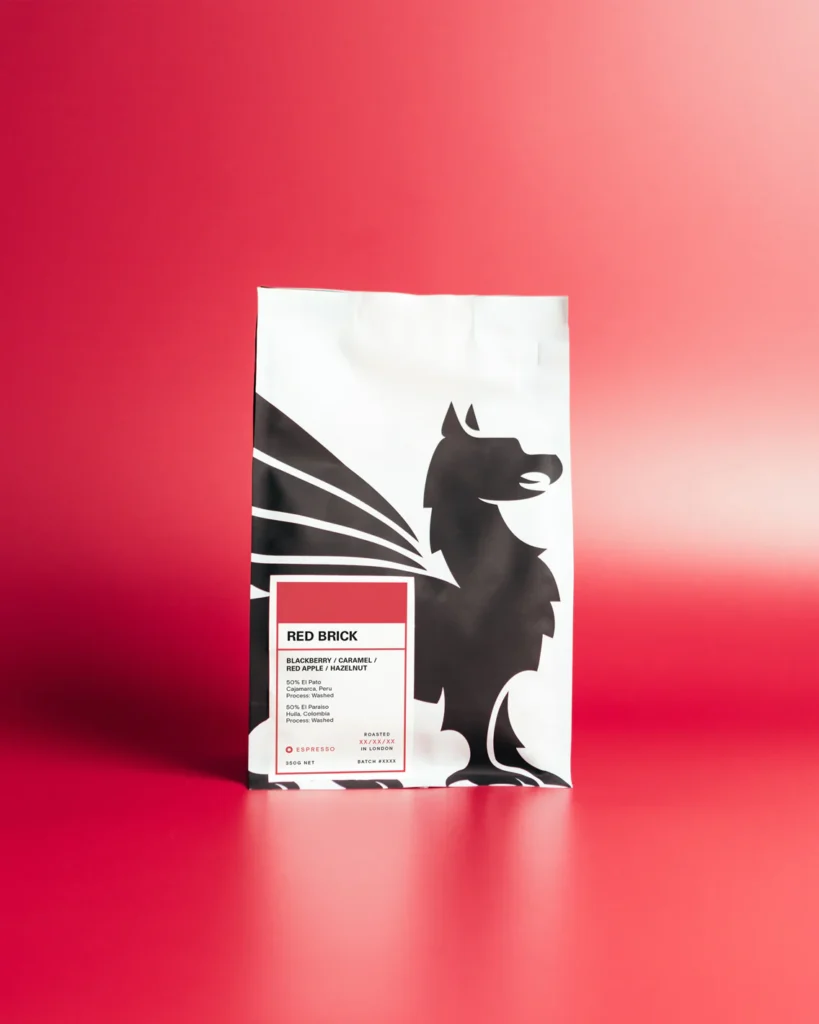Our container of Brazils is just about to set sail for London, and in anticipation it seems a good time to write a little about my buying trip a few weeks back. Cupping at our exporters offices is always a pleasure, they know what I’m looking for and always show me good options from both my favourite farms and interesting new ones. I also really enjoy getting to cup what they cup every day, which is really intense but great fun. The work they put in is incredible, the amount of samples they go through and have in store is overwhelming to me, but they make it all look so easy. The graders, roasters and cuppers run a tight ship in the lab which allows me to cherry pick from their already scrutinised selection, while the office personnel stay on top of documents and logistics, making sure all t’s are crossed and i’s are dotted and that I sign my contracts on time.


One of the farms I visited last year, but didn’t get the chance to buy from, was Fazenda Laranjal. I was keen to pick up a lot from them this year, and am really happy to have found a great 50 bag lot of their Pulped Natural.
A short drive outside Pocos de Caldas is Laranjal, a beautiful sprawling place, with buildings inspired by Italy charmingly overgrown with vines. Surrounding the farm buildings are the homes of most of the 40 full time employees and their families. A good sized farm, they produce about 5000 bags per year, 70% of which qualifies as high commercial and specialty. Driving onto the property you pass through dense yellow and green trunked bamboo clusters and come right up to one of their areas with new plantings. A year old, these trees are part of the extensive rejuvenation taking place on the farm, but with the heat Brazil has been getting they’ve had a tough start. When I visited they’d had 45 days without rain, and some of the little trees had clear marks of sun damage on the most exposed side, the budding cherries turning black and dying where they should be a fresh green colour. Normally they’d see 3 rainfalls here but there had been only 2, which means yields might still be low next year.



Laranjal, which sits from 1300masl and up, is a multi aspect farm with big contrasts in altitudes, temperature, sun exposure etc. Finding the correct plans and schedules for fertilising, harvesting and pruning is a challenge. On the drive around the farm I could see pruning experiments being carried out to identify what the best approach is for the various plots and exposures, such as safrazero in some areas or lopping off the tops of the trees in others. I was happy to note that the young trees I saw when they were new plantings last year looked healthy and strong in their second year.





Also from the drive I got to check out the dam on the farm where they collect and filter the water, the plots of tree-dried naturals that had been commissioned by one of their Japanese customers, the citrus trees dropping oranges and lemons everywhere, and the protected natural forest reserve along the stream at the bottom of the valley. Visiting at the end of harvest mean the mills are quiet, and the pulper and parchment transport channels that run across the property were closed down for the season. The tail end of this year’s naturals were still on the patios and in the big guardiolas in the bodega. Laranjal have both the old, vertical style guardiolas and the newer round style ones, both fuelled by farm cuttings and waste coffee husks. The advantage of the older style is that they need less heat, but they are also slower.


Doing far better in the heat were the jabuticaba trees, one of my favourite weird and wonderful creations of nature, and a delicious fruit to boot! Since his cousin is the farm manager, Cristiano cheekily picked a big bag to take back to the office for everyone. I’m secretly hoping to find jabuticaba fruit as a flavour note in the coffee when it arrives!






